Feeder fishing is advancing at a rate of knots, both in terms of its popularity and the gear that is now available, so having the right tackle is important and with so much variation in venues nowadays, having the best lines for feeder fishing is just as crucial as any other item in your armoury. Getting it wrong can lead to missed bites, reduced distances and reduced success.
In terms of the best lines for feeder fishing, there are two main options to choose from when it comes to your mainline, and they are braid or mono. Both of these lines have their advantages and disadvantages, and each will outperform the other in certain situations. Standard mono is still widely used and is considered better as an all-rounder as it is much more user-friendly. Cheap and durable, it sinks reasonably well, and its degree of stretch acts as a shock absorber against hard-fighting fish.
Best lines for feeder fishing at a glance:
Braided lines, on the other hand, is a completely different beast. It has zero stretch, meaning bite detection and casting accuracy are improved, and there is less drag in the water, so a lighter quivertip can be used with an undertow or on rivers. It can however, be tricky to play big fish on, it’s often banned on commercials and it can be awkward to sink when using small feeders on shallow lakes. If you’re looking to regularly cast a long way or launch out heavy feeders, a shockleader is a must in the form of a couple of rod lengths of heavier line (typically 10lb-plus). So, let’s have a look at some of the best lines for feeder fishing available.
How we test feeder fishing lines
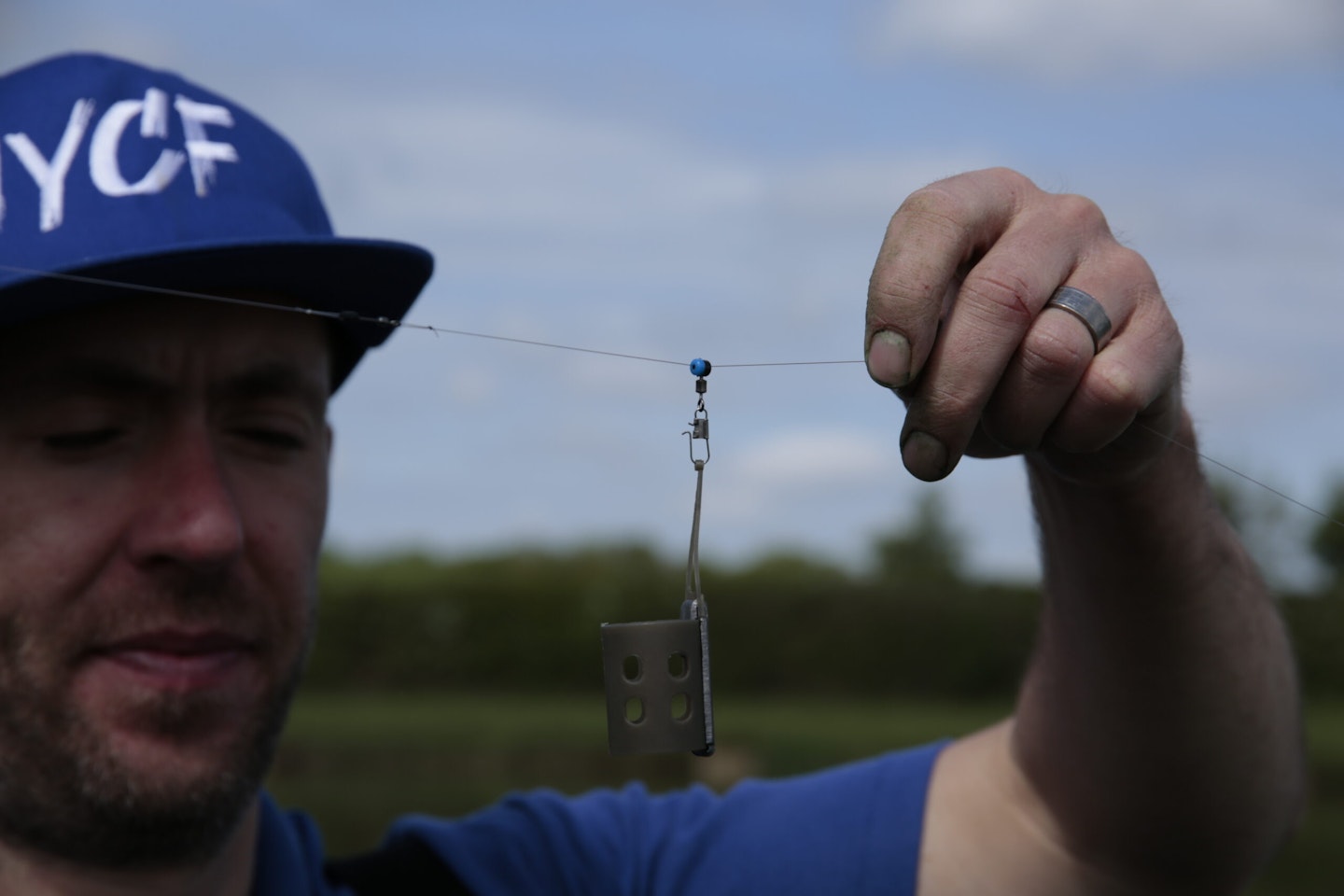
These fishing lines were tested by experienced members of the Angling times team. We have been using and abusing lines like these for decades and have probably used most, if not all of them during our time on the bank, so we know the best from the rest!
Tackle testers, Dan Webb and Tony Grigorjevs have been testing a variety of the best feeder lines in varying scenarios to ensure they perform how they are supposed to for the given method they were designed! Whether it be Method feeder fishing, catching barbel on a river or fishing at range with a Hybrid, the lines have been thoroughly tested on rivers and lakes so we can give a rounded review!
Our decision process of what makes the best feeder lines takes into account various factors including price point, durability, usability and casting potential to ensure we can give you the best advice on factors that will make an actual different to your angling.
The following list includes a mixture of our favourites for all types of feeder fishing you are likely to encounter! Find out how we test our gear, HERE.
Mono
1.
Daiwa Sensor
Best value line for feeder fishing

www.fishingtackleandbait.co.uk
There’s a quiet confidence about Daiwa Sensor that makes it a mainstay in many a feeder angler’s tackle box, not flashy, not over-engineered, but solid, proven, and remarkably dependable. Sensor just gets on with the job, and gets on with it very, very well.
On the feeder, it offers exactly what you want. That sweet spot between stretch and control. Enough give to buffer a lunging fish at the net, yet still responsive enough to pick up subtle liners at range. It beds beautifully on the spool, casts cleanly, and most importantly, stays true to its stated diameter.
Offered in diameters to suit everything from light bream work to hauling barbel, and with both 300m and 1000m+ spools (dependant on diameter), Daiwa Sensor covers all bases. Available in standard and clear colours, it offers ridiculous value for money. A proper, no-nonsense feeder line that just works.
Pros
- Cheap, high-capacity spools.
- Very strong.
Cons
- Not the lowest diameter.
Best feeder fishing line for strength
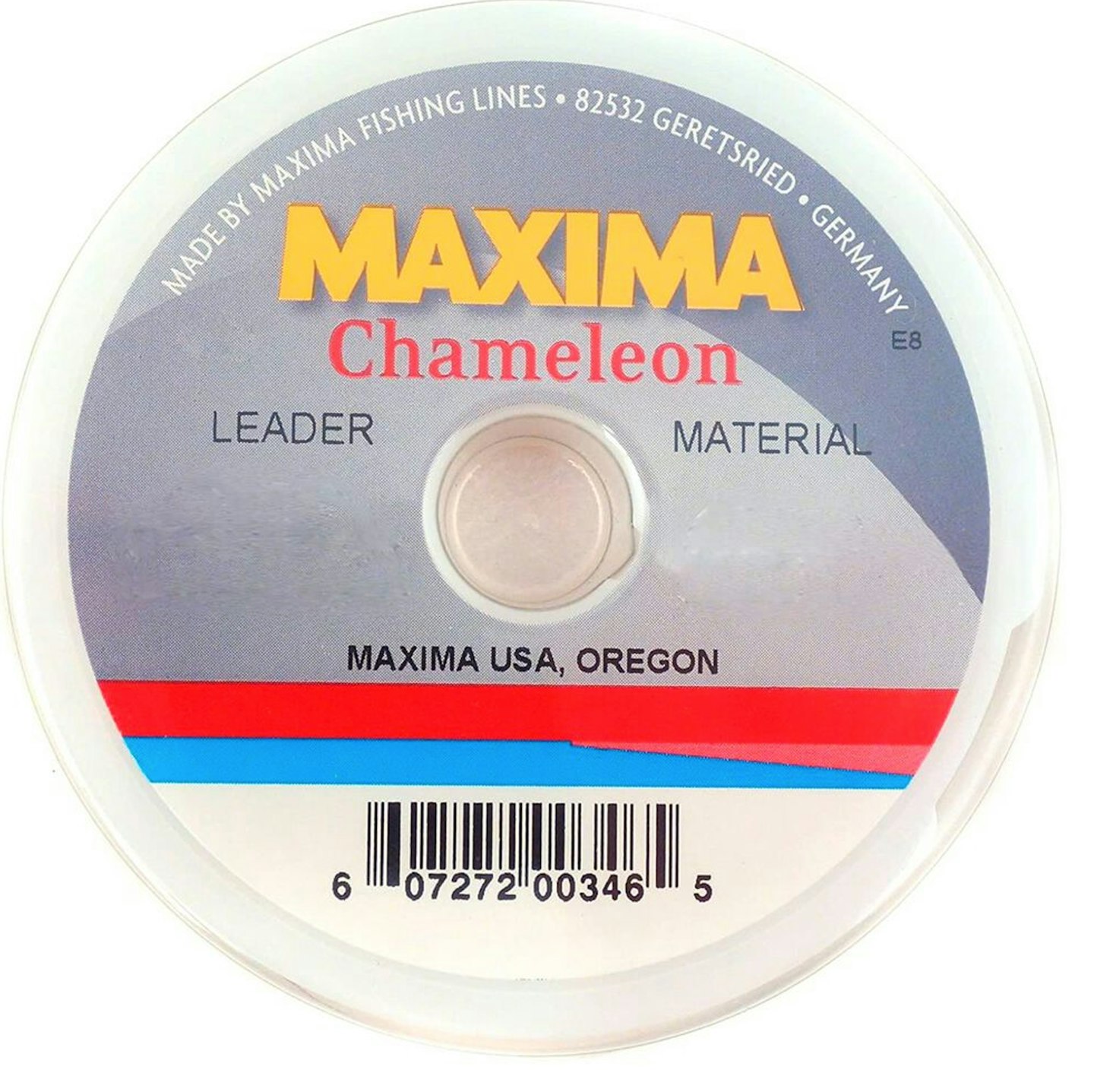
www.fishingtackleandbait.co.uk
Maxima Chameleon isn’t just a line, it’s a legacy. For countless feeder anglers, it’s the one constant in a world full of ever-changing gear. It’s been spooled up, cast out, and trusted for decades, and for good reason.
This is a tough, no-nonsense mono with real backbone. Built using a unique blend of strength and elasticity. Ideal for feeder work where control and consistency matter. Its hardened surface shrugs off abrasion, meaning it can stand up to the rigours of feeder fishing, submerged debris, marginal reeds, gravel bars and not bat an eye.
Then there’s the colour. Chameleon by name, and by nature. The colour blends in a range of water conditions, and substrates staying subtle and out of sight. It’s not about gimmicks, it’s about doing the job right, which its proven time and again.
Available in 100m continuous spools, so you can buy 100m, 200m, 300m for your requirements, one shot spools designed to fill your reel in varying lengths of around 200m dependant on diameter or bulk spools of 600m.
Pros
- Super strong, even in lower-breaking strains.
- Supplied on affordable high-capacity spools.
Cons
- Is quite stretchy.
Best feeder fishing line for usability
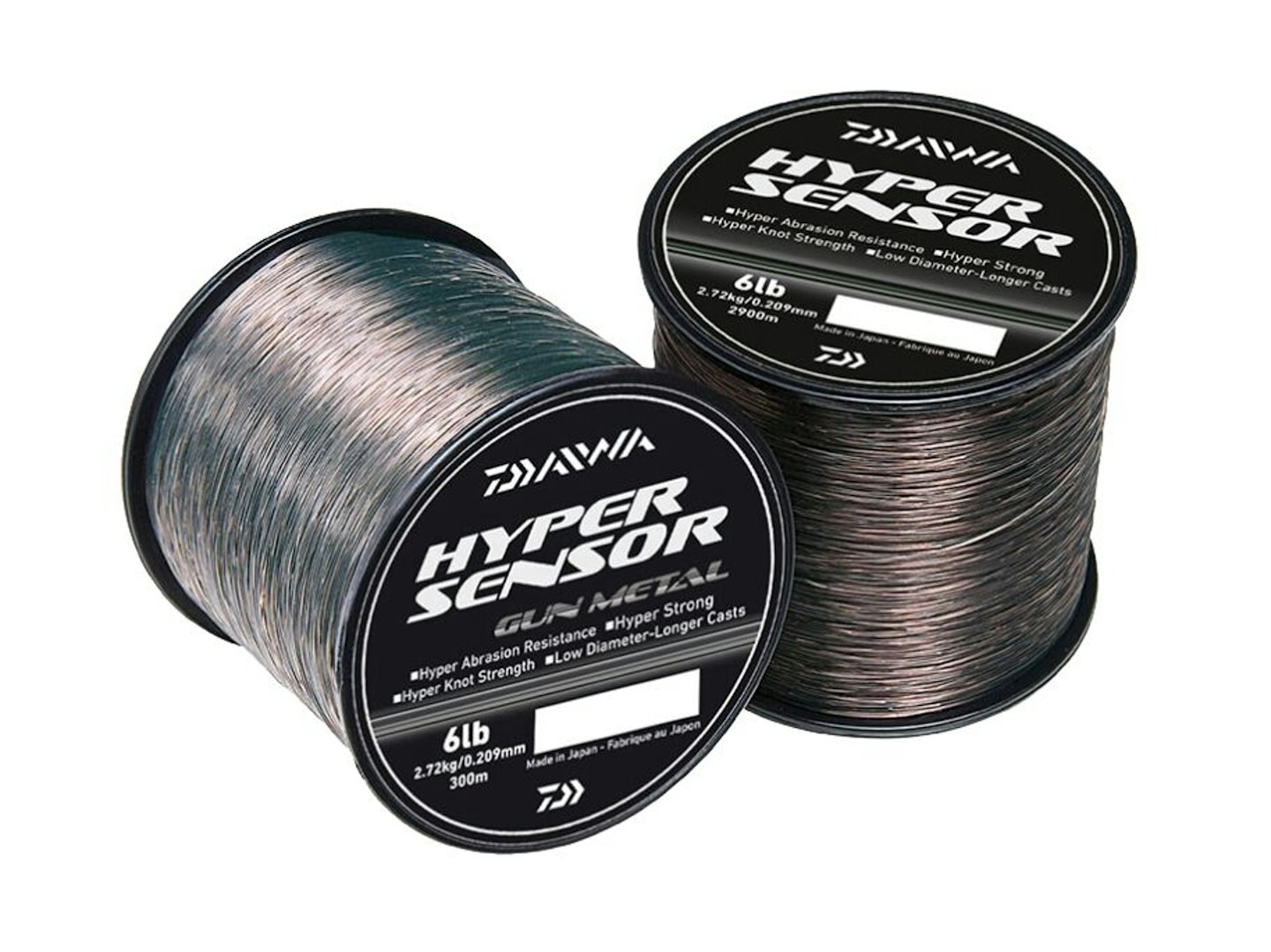
www.fishingtackleandbait.co.uk
Building on the rock-solid reputation of the original Sensor. Daiwa Hyper Sensor is the evolved version delivering the same trusted breaking strains, but with a key upgrade: a 20% reduction in diameter.
That thinner profile makes all the difference on the cast. Whether you're chucking feeders to the horizon or maintaining accuracy in a crosswind, Hyper Sensor offers noticeably less resistance through the air and through the water. The result? Smoother, longer, and more accurate casting, all with the same dependable strength Sensor is known for.
It’s a touch more expensive than standard Sensor, but you’re paying for performance. When presentation and distance really matter, that slimmer line can be the edge you need. Available in both 300m spools and bulk spools of 1000m+ depending on diameter, two different colours (standard and gunmetal grey) it’s ready for everything.
Pros
- Good for casting.
- High knot strength.
Cons
- A bit more expensive than standard Sensor.
Best feeder fishing line for commercials
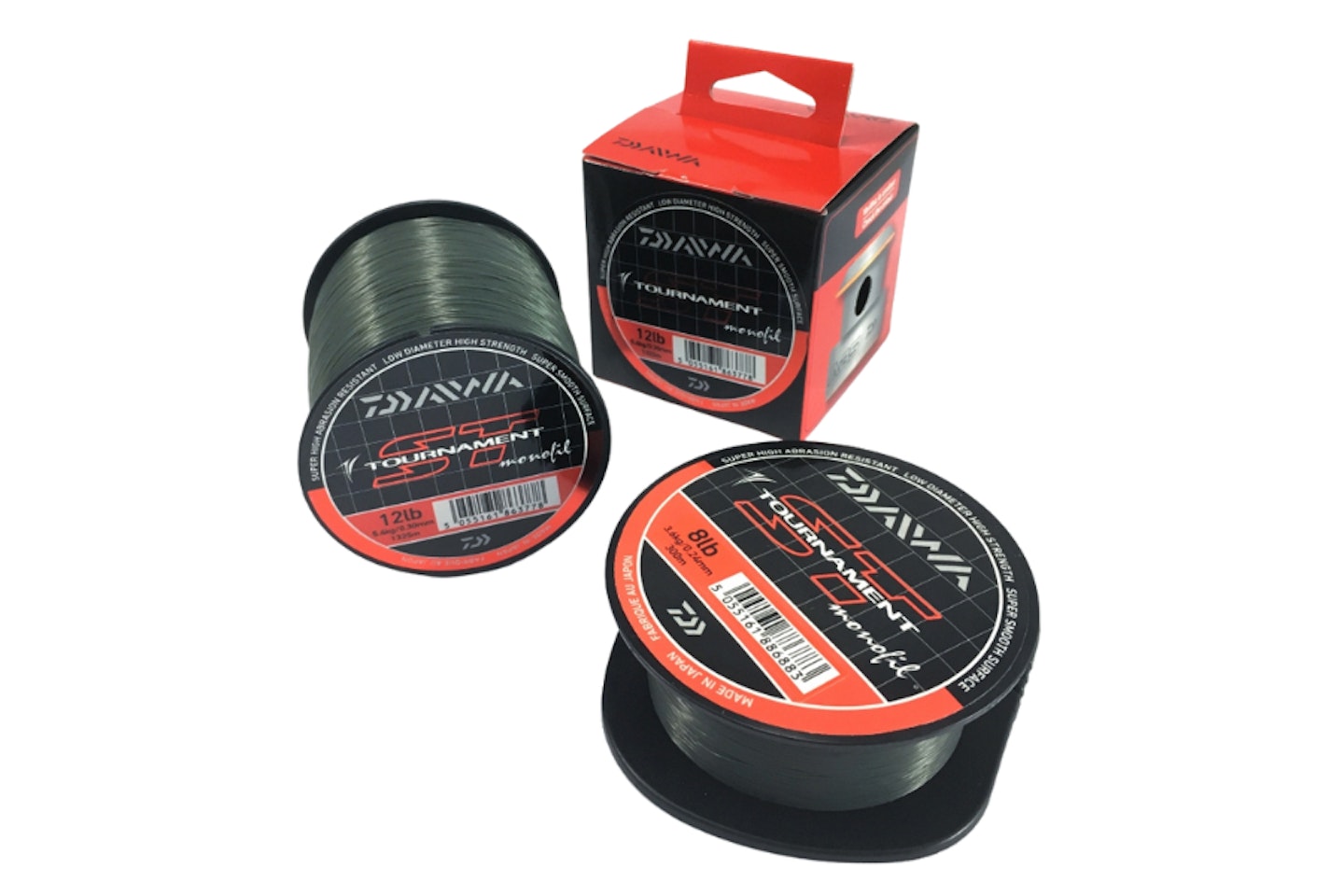
www.fishingtackleandbait.co.uk
Daiwa Tournament ST Mono has earned legendary status among serious anglers, and for good reason. Recognised for its exceptional durability and abrasion resistance, it’s a line that shrugs off punishment where others might fail.
Built to be multiple times tougher than standard mono, ST excels in demanding conditions, be it rubbing over gravel bars or pulling fish through snags. Even when deliberately nicked and scuffed in tests, it held strong. That resilience, combined with ultra-low memory, means fewer coils, cleaner casts, and less tangling session after session.
Its slick surface stays smooth with use, making it a reliable choice over time, and not just fresh off the spool. Available in 300m and bulk spool sizes, Tournament ST is a solid feeder line and also serves brilliantly as a shockleader in heavier breaking strains.
Pros
- Incredibly strong
- Low memory, abrasion resistant
Cons
- Not the lowest diameter
Best in class feeder fishing line
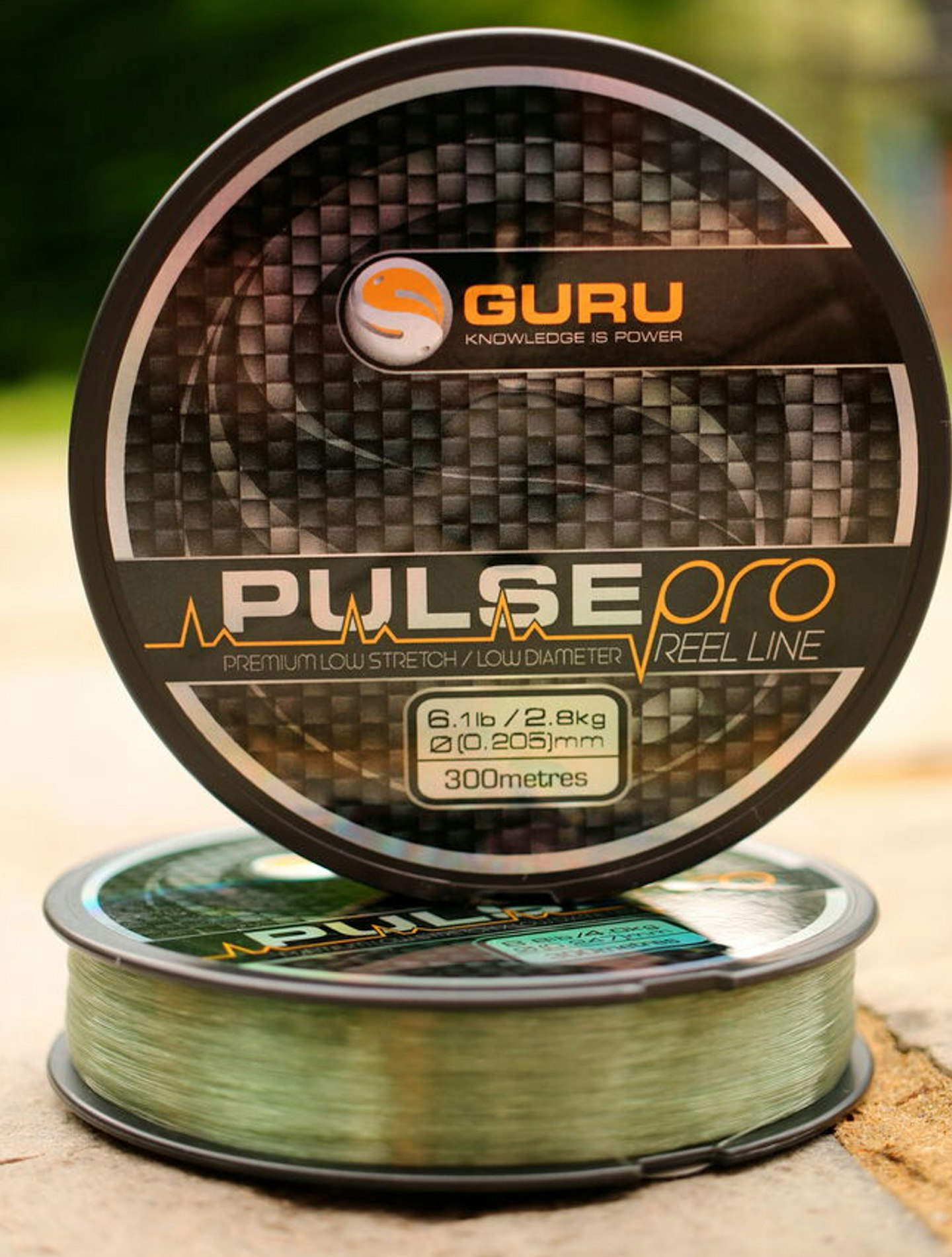
www.fishingtackleandbait.co.uk
A high-performance monofilament tailored for the demands of modern feeder fishing. The Guru Pulse Pro uses the latest technology, this line boasts an ultra-low stretch composition, offering crisp bite detection and rapid line pick-up, ideal for refined setups and distance feeder fishing styles.
The line’s fine diameter across all breaking strains aids casting distance without compromising strength. That means longer, more accurate casts with the confidence to land quality fish. Whether you're fishing short chucks speed fishing for roach or targeting distant skimmers and bream, Pulse Pro delivers consistency.
Its available range from 0.182mm (5.3lb) up to 0.279mm (10.2lb). Offering enough scope for everything from natural venue silvers to more demanding commercial feeder work.
Pros
- Superb for casting.
- Incredibly fine diameter.
Cons
- Low stretch can cause problems at close range with big fish.
Best all-round feeder fishing mono
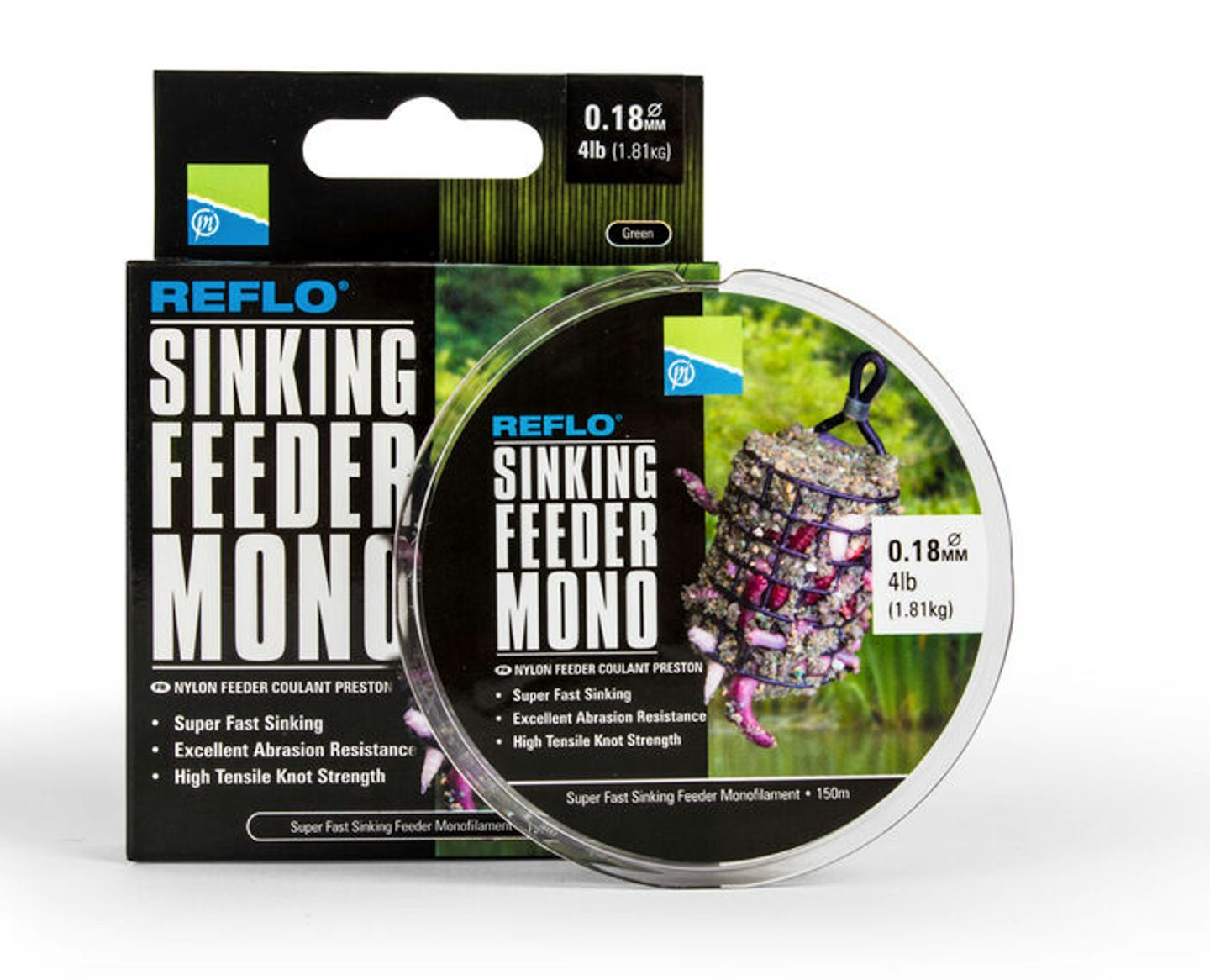
www.fishingtackleandbait.co.uk
Developed with the legendary Tommy Pickering during his time at Preston Innovations, Reflo Sinking Feeder Mono has feeder fishing pedigree running through its core. Designed to handle everything from delicate roach and skimmer work to hauling match-sized carp on the method, it’s a true all-rounder.
The line combines exceptional strength with surprising suppleness, making it forgiving enough to fish fine yet robust enough to deal with aggressive feeders and heavy weights. Its rapid sinking nature ensures direct contact with the feeder, reducing bowing and improving bite detection, especially in crosswinds.
Coloured a subtle neutral green, it blends into most environments effortlessly. If you're casting short on commercials or chucking long on natural reservoirs, Reflo Sinking Feeder Mono is a proven performer. Available in diameters from 0.16mm (3lb) to 0.28mm (10lb)
Pros
- Low diameter and great for casting.
- Good abrasion resistance.
Cons
- Fairly small spool size.
Best sinking feeder fishing line
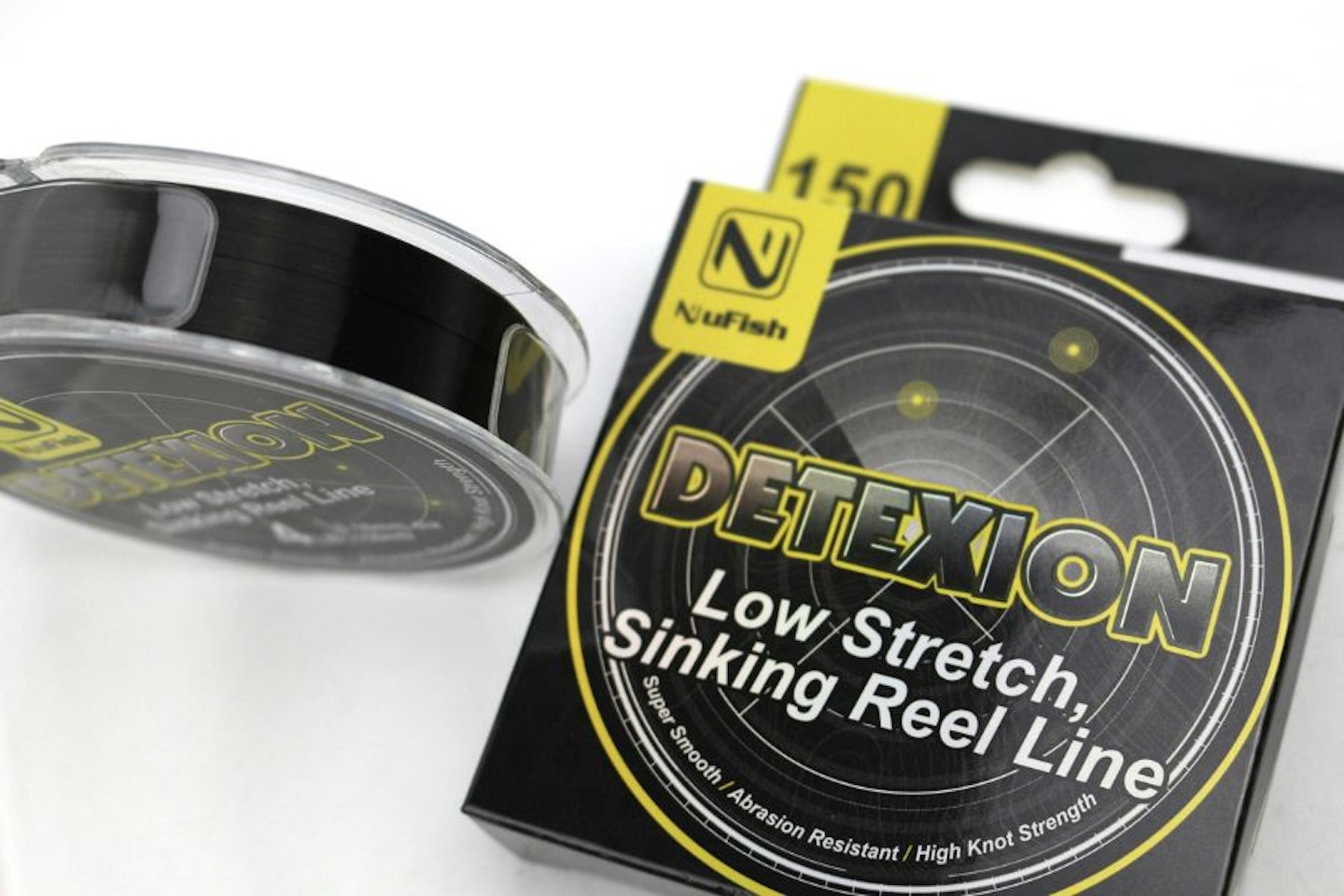
www.ebay.co.uk
Detexion is a proper angler’s line, no gimmicks, just performance where it matters. This super low-stretch, fast-sinking mono keeps you locked in to every movement on the feeder, giving bite detection that’s instant and unmistakable.
With a slick, hard-wearing finish, it handles repeated casting without flinching, yet stays supple enough to behave beautifully on the spool. The low-vis colour keeps things stealthy underwater. Available in breaking strains from 3lb (0.16mm) to 10lb (0.28mm) on 150m spools, Detexion is one of those rare all-rounders that feeder anglers won’t want to be without.
Pros
- Sinks incredibly quickly
- The dark grey colour blends in nicely in the water
Cons
- Only available in 150m spools, so may require backing in lighter breaking strains
Best line for method feeder fishing
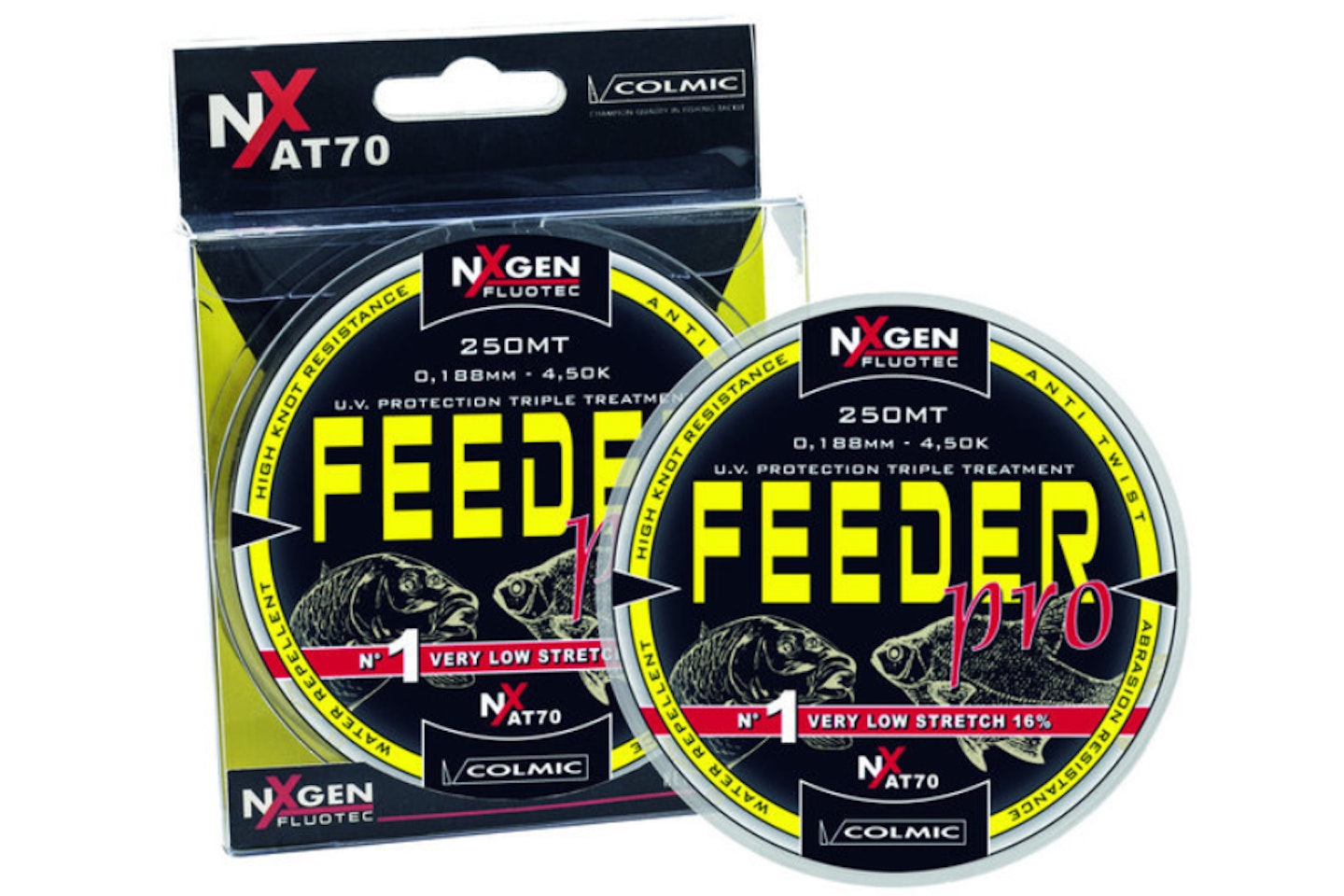
www.ebay.co.uk
Colmic Feeder Pro has been purpose-built for feeder anglers looking for greater control, particularly popular on the continent it offers sharper bite detection, and improved accuracy. Offering up to 20% less stretch than standard monofilaments, its performance edge becomes clear the moment you clip up and start casting.
The low stretch and fine diameter-to-breaking strain mean you can fish with confidence at distance, knowing your line will remain straight on the cast and not succumb to crosswinds, cut through the water with ease and deliver clear bite indication when it matters most. That responsiveness is especially valuable when bites are shy or you're fishing at long range where the stretch in standard mono would suppress the feedback
Its low memory also reduces coiling, therefore improving travel, and reducing friction through the rings. This line is engineered for serious feeder work where every margin counts.
Pros
- Lower diameter for its breaking stain
- Low Stretch
Cons
- 250m sometimes not enough to fill deeper spools
Best low diameter feeder fishing line
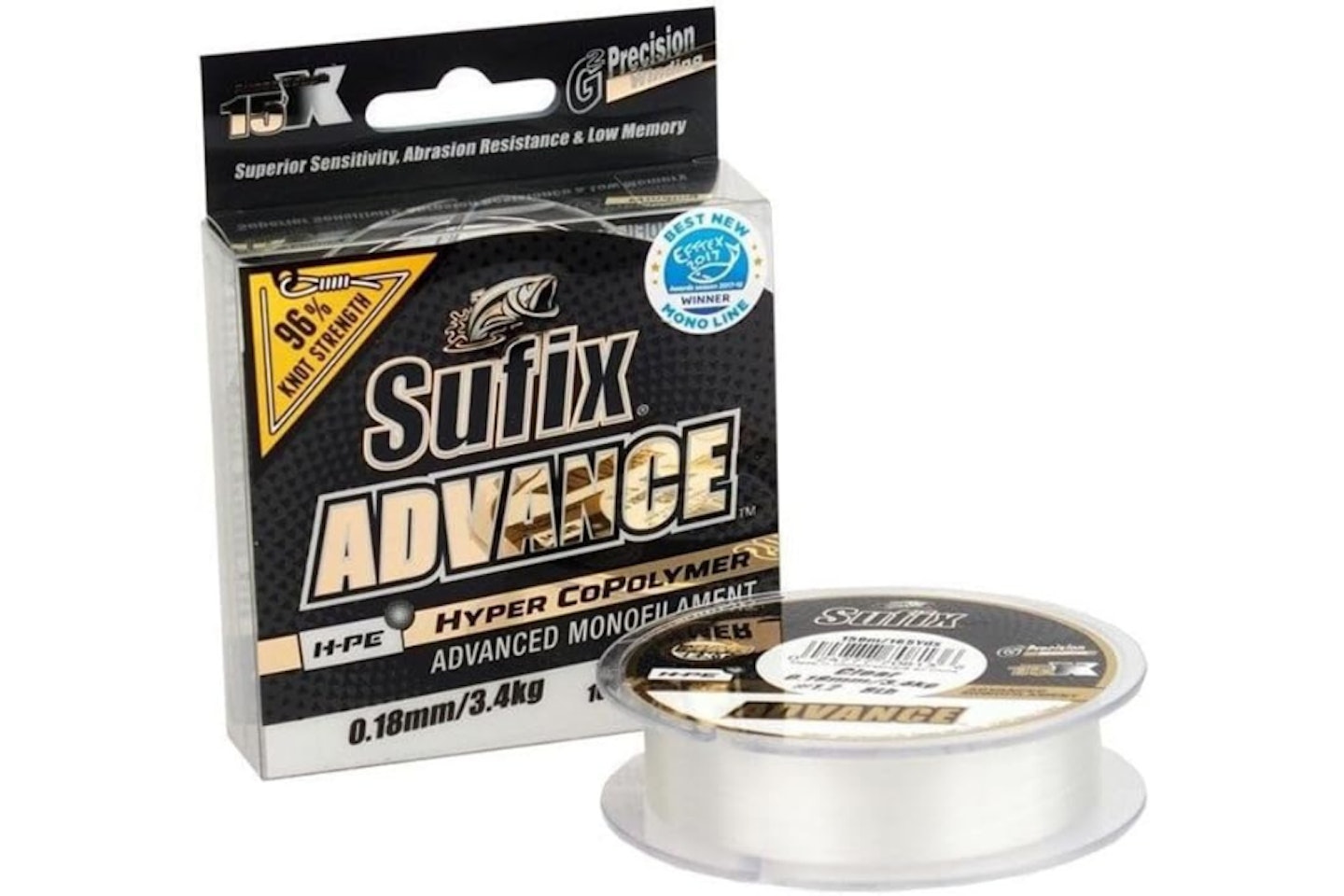
www.ebay.co.uk
Originally a hit in the lure fishing world, Sufix Advance Monofilament has quietly found a following in feeder anglers who know their lines. With up to 50% less stretch than standard mono, it’s remarkably responsive, giving you crisp bite detection, especially at range.
The abrasion resistance is off the charts, thanks to a unique Magnetic Extrusion Process that draws tough High-Molecular Polyethylene (HMPE) molecules to the surface of the line. This creates a resilient outer layer that shrugs off abrasion and underwater snags without sacrificing the suppleness and finesse that make it cast like a dream.
The fine diameters combined with virtually zero memory thanks to Sufix’s G2 Precision Winding, mean smoother casting and fewer tangles. Whether you're fishing a tiny cage for skimmers or launching a method a long way for big carp, Sufix Advance’s lure fishing pedigree gives you a line that’s tough, sensitive, and perfect for modern feeder angling. Available in clear or green colour and a range of diameters from 0.16mm (6lb) to 0.40mm (33lb) in 150m and 300m spools.
Pros
- Super low diameter for breaking strain
- High abrasion resitance
- Limp and supple
Cons
- Needs to be highly lubricated for knots
BRAID
Best all-round feeder fishing braid
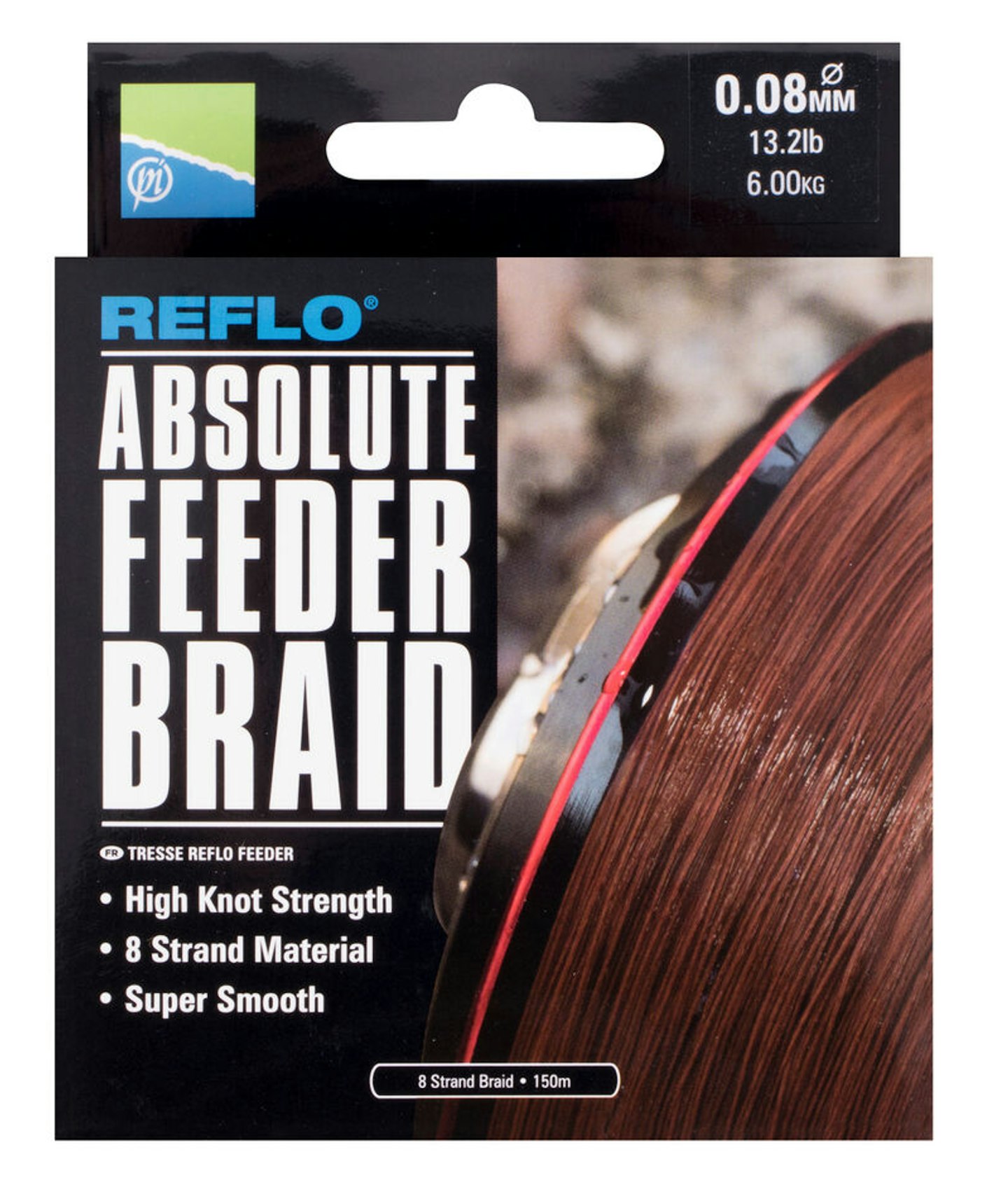
www.fishingtackleandbait.co.uk
A braided mainline designed specifically with the modern UK feeder angler in mind the Preston Innovations Reflo Absolute Feeder Braid, is built from an 8-strand Polyethylene (PE) material, this braid delivers a smooth, ultra-durable, and high-strength performance that outclasses traditional monofilament in sensitivity and casting finesse.
Thanks to its ultra-low stretch, bite detection is instant and precise, perfect for targeting cagey fish at range or when finesse is paramount. The special surface treatment helps the braid sink quickly while offering the perfect balance between suppleness and stiffness, resulting in suppression of wind knots, with crisp casts every time.
Available in ultra-fine 0.08, 0.10 & 0.12mm diameters with impressive breaking strains, Absolute Feeder Braid is for serious feeder fishing.
Pros
- Incredibly smooth casting performance.
- Unique colouration.
Cons
- The thinner diameter can be prone to wind knots, make sure its well wetted before using.
Best casting braid for feeder fishing

www.fishingtackleandbait.co.uk
A premium eight-strand braided mainline, Guru Pulse-8 Braid is purpose-built for feeder fishing where sensitivity and direct contact are essential. By using eight tightly woven fibres instead of the usual four, Pulse-8 achieves a rounder, smoother profile that sails through the guides with minimal resistance, perfect for long-range casting.
Its ultra-thin diameter combined with exceptional strength gives you the confidence to fish fine without compromising power. Whether you're fishing at extreme range or need instant bite feedback, Pulse-8 delivers superb performance with crisp line pickup and a supple, user-friendly feel. Available in 0.08, 0.10 & 0.12mm diameters. A popular choice amongst serious feeder anglers.
Pros
- Fantastic for casting.
- Very strong.
Cons
- Not the best sinking braid available.
Best sinking braid for feeder fishing

www.fishingtackleandbait.co.uk
Matrix Horizon X Coated Braid takes long-range feeder fishing to another level. Building on the reputation of Submerge, this high-tech 8-strand PE braid features a durable, ultra-smooth coating that reduces resistance through the air and guides, helping you hit those few extra vital metres when it really matters.
The coating not only aids casting distance, but also improves sink rate and adds a touch of stiffness that helps prevent wind knots, a major bonus when fishing in open, breezy conditions.
With zero stretch, bite detection is instant and crisp, even at range. Available in three diameters 0.08, 0.10, & 0.12mm, all on 150m spools, Horizon X is tough, abrasion-resistant, and refined for anglers pushing the boundaries of feeder fishing.
Pros
- Sinks well.
- Smooth performance.
Cons
- The coating does slightly reduce the casting distances.
Best High performance braid for feeder fishing
www.total-fishing-tackle.com
This isn’t just another braid, it’s Daiwa doing what Daiwa does best. The N’Zon X8 is a refined, purpose-built feeder line crafted from premium Japanese IZANAS™ PE fibre, and it shows in every inch.
You get the slick, rounded profile of an 8-strand weave, that is noticeably smoother and more supple than a typical 4-strand, delivering effortless casting and accuracy.
Its stealthy grey tone keeps things subtle, it has been treated with silicone that gives the line that unmistakable sound as it glides through the rings. Available in 0.08, 0.10, and 0.12mm on 150m or 300m spools.
Pros
- Silicon treated to increase distance and reduce noise
- Cuts through surface tension quickly, therefore sinks well
Cons
- Requires thorough lubrication for optimum performance
Shockleaders
Best strongest shock leader for feeder fishing
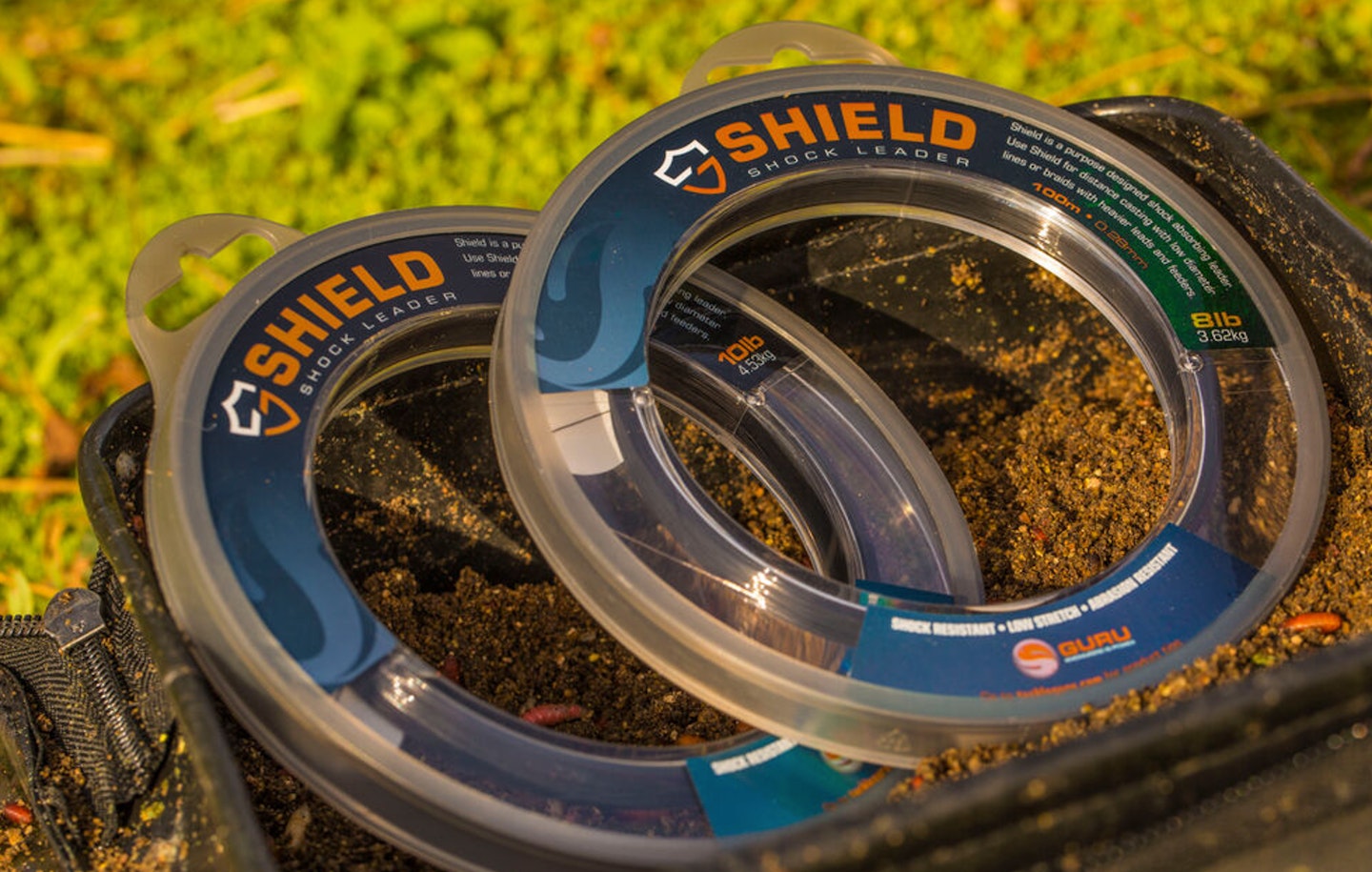
www.fishingtackleandbait.co.uk
When it comes to casting big feeders a long way, your setup is only as strong as its weakest link, and Guru Shield makes sure that link isn’t your leader. This is proper, purpose-built shockleader material. Low-stretch, highly durable, and tailored to take the hit when you're loading up a rod and launching a payload.
Designed for feeder fishing at range, Shield absorbs the shock as heavy feeders are fired out under full compression, allowing fine diameter mainlines to do the rest of the distance work. It gives you the best of both worlds, distance and strength, while keeping things tangle-free and the knot-reliable.
If chucking method feeders across vast expanses or need absolute control under the tip when playing big match carp, Shield keeps gives you the confidence required in a vital part of your setup. Available in 8lb (0.28mm), 10lb (0.30mm), and 12lb (0.33mm) on 100m spools.
Pros
- High knot strength.
- Ultra smooth finish.
Cons
- Knot can be a little large in the higher breaking strains.
Best tapered shock leader for feeder fishing
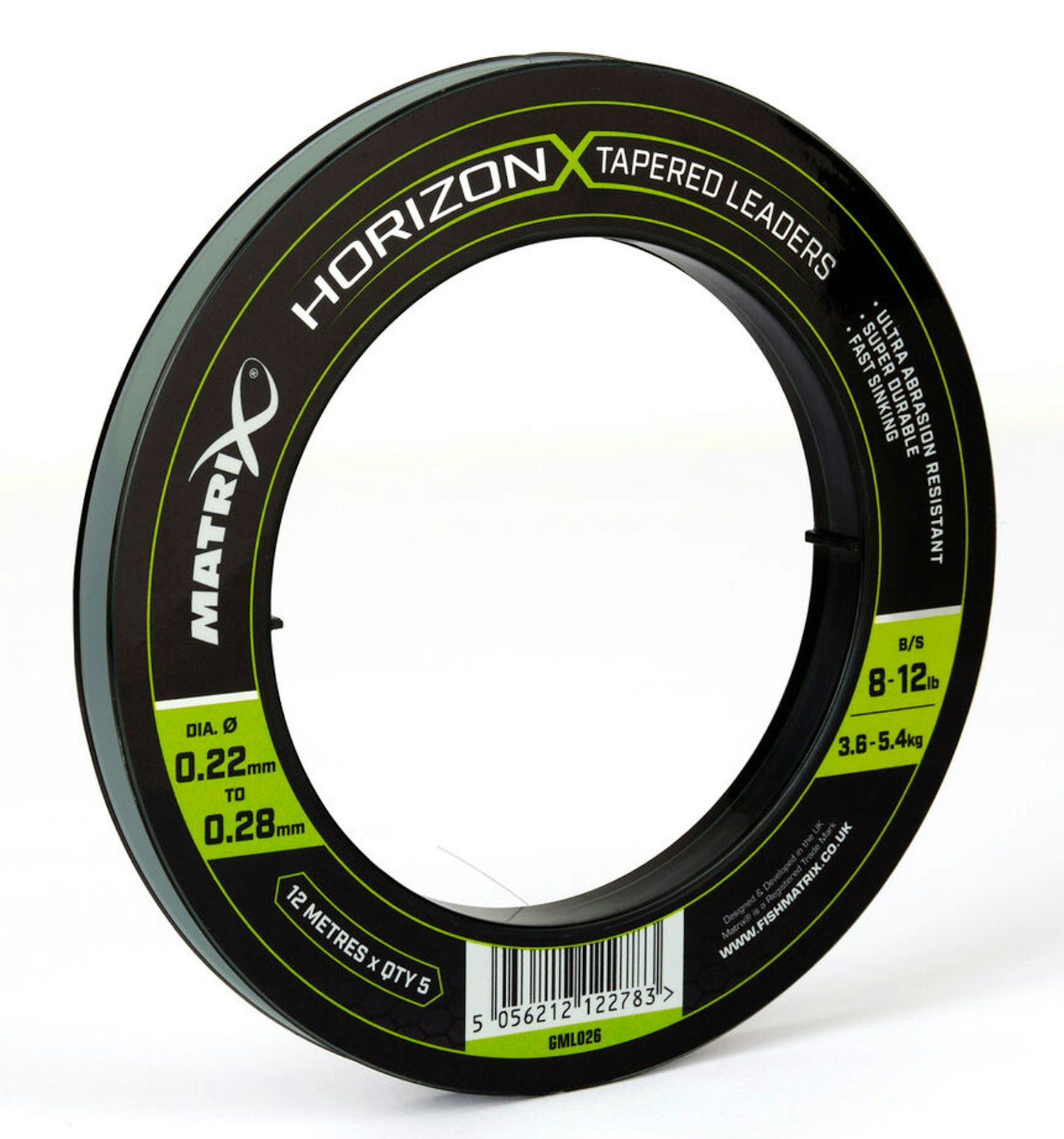
www.total-fishing-tackle.com
When every metre matters, Matrix Horizon X Tapered Shockleaders offer a refined edge for serious feeder anglers pushing the limits of distance. Cleverly tapered from 0.22mm to 0.28mm, they give you the brute strength you need during the power phase of the cast, while quickly slimming down to reduce air and rod ring friction as the rig flies, helping you squeeze out those precious extra metres.
Paired with a fine diameter mainline, the transition is seamless, allowing for smoother, longer, and more accurate casting without the bulk of a standard knot join. The abrasion resistance and high knot strength is confidence-inspiring, and the supple, discreet finish keeps it all inconspicuous when the feeder is in the water. Supplied in 5 x 12m lengths.
Pros
- Smoothly travels through the rod rings.
- Low diameter makes a small knot.
Cons
- The 12lb taper might be a bit thick but it can be trimmed back to suit.
What to look for in a feeder fishing line
As with any type of angling, your line choice will be dictated by the venue and the species you intend on targeting. There would be little use in using a light, feeder fishing line when targeting big carp and barbel, the same as using a thick diameter line for trying to cast a long way. Always suit your line to best serve the situation you are faced with.
If you're fishing for species like bream, skimmers and roach on a large natural venue, the best line for feeder fishing in that scenario would be to use a braided mainline. The zero stretch properties of braid will magnify even the shiest of bites and indications allowing you to act on them, the same bites when using a mono may not register giving you a false impression of what is happening in your swim.
A mono is definitely far the best line for feeder fishing if you're targeting large fish that tend to pull the rod in and feed far more aggressively. Mono has great shock absorption properties and is far more robust against snags due to the stretchier properties it has. If you're new to feeder fishing a mono is always the best line to start with, it's far more user friendly and forgiving, allowing you to get used to casting and landing fish, before maybe trying a braid if you feel the need to.
Glossary
Diameter: The distance across a circle, which equates to how thick a line is. The higher the diameter the thicker the line will be.
Breaking strain: The amount of pressure that must be applied to an unknotted line before the line breaks. Therefore it doesn't mean you can only catch fish upto 10lb on 10lb line.
Abrasion resistance: The ability of a surface to resist being worn away by rubbing or friction, the better the resistance, the more it will resist being worn away.
High stretch: The amount a line will stretch varies amongst monofilaments, a higher stretch line will just simply stretch further at a given length then a low stretch.
Supple: How easily something bends and moves, the more supple, the more freely an object will move.
Spool: A cylindrical device upon which the line is wound.
High knot strength: The ability to maintain strength as close to the original breaking strain after knotting the line.
Monofilament line: Monofilament fishing line (shortened to just mono) is fishing line made from a single fibre of plastic material.
Braided line: Braids are made by braiding or weaving fibres of a man-made material into a strand of line. The strand number will indicate how many fibres are woven together.
Shockleader: A length of heavier breaking strain line that is attached to your main fishing line so that it does not break during the cast.
Feeder fishing lines FAQ's
Is it better to use braid or mono for feeder fishing?
If you're fishing for smaller silverfish and bream at any sort of range past 20m, a braid will definitely benefit you, as it will show bites and indications up far more clearly than a mono will. If you are fishing for carp on a commercial, or silverfish for that matter, a mono mainline would be the better choice. Mono has more stretch in it to be able to cushion the harder fighting fish like carp and bigger bream in commercials, and without that you would suffer a lot of hook pulls.
Will diameter affect the distance I can cast?
The higher the diameter, the thicker the line, the more friction it will produce through the rod rings when it is cast. If you are looking for extreme distances, using a lighter line with a shock leader will help. We would advise though, if the fish are simply too far, do not use a line that will not be up to landing the fish, just so you can reach them. As all breakages that can be avoided should be.
Does line colour matter?
This is a debate that will never end in fishing, simply because we just can't ask the fish what they can and cannot see. While clearer lines would be the obvious choice for us, they may be more detectable underwater. Quite simply, the manufacturers make line in colours they sell, that must mean they are popular, and people have confidence in them. Try not to worry too much about the colour, especially if the line will be on or near the bottom out of sight anyway.
What is the best line for Method feeder fishing?
When it comes to fishing the Method Feeder, a monofilament line with a breaking strain between 6-10lb is perfect!
How do I spool line onto a feeder fishing reel?
The best way to put new line onto a reel is to soak it in a bucket of water for an hour or overnight. Line needs to be kept under tension as you wind, and it is easiest to keep the spool in a bucket of water to create drag. As well as using the bucket of water, I’ll wind the line on to my reels through a damp cloth. This grips the line just above the ring of the rod butt that I attach my reels to when spooling up.
What is the best line for feeder fishing?
The best line for feeder fishing depends on method and target species, but if we had to choose, it would be a standard monofilament mainline as it is versatile, robust and easy to use!
Author Dan Webb first became involved in angling journalism in 2015 and has worked as Tackle Tester at Angling Times since April 2021. He is a fanatical all-round match angler and former England Youth International.
{#block-1e7d6e79-beae-4b9f-85b5-fbd1ba3b0ee9}
